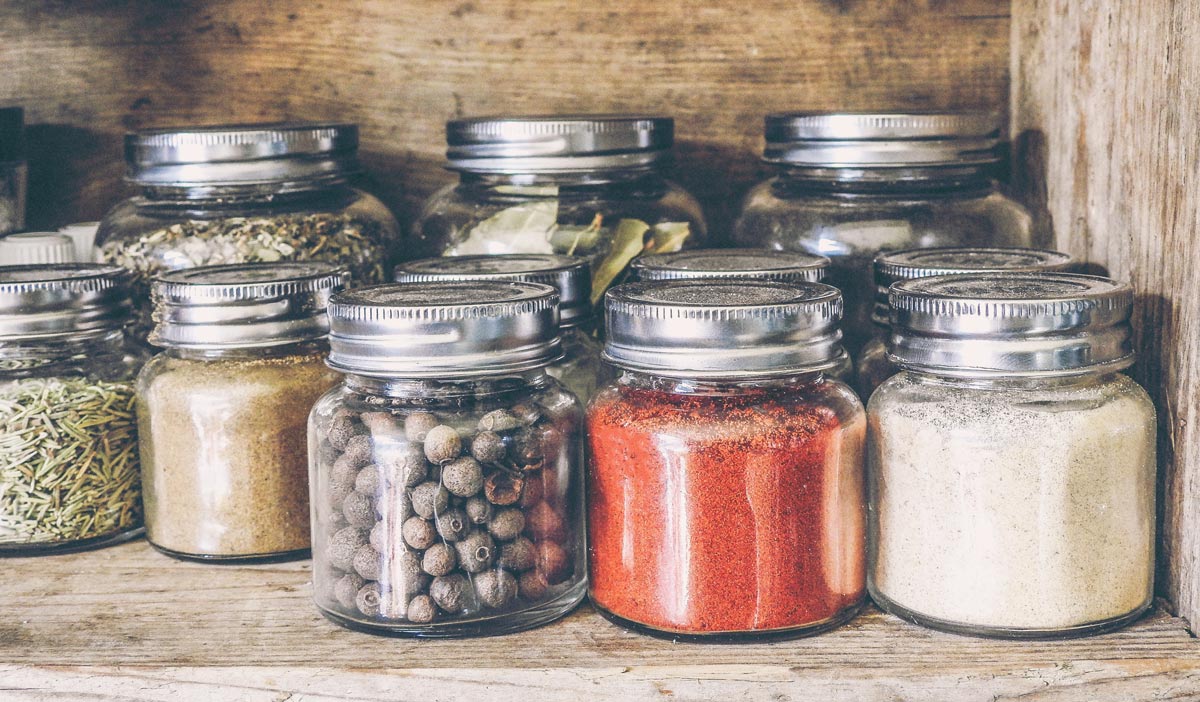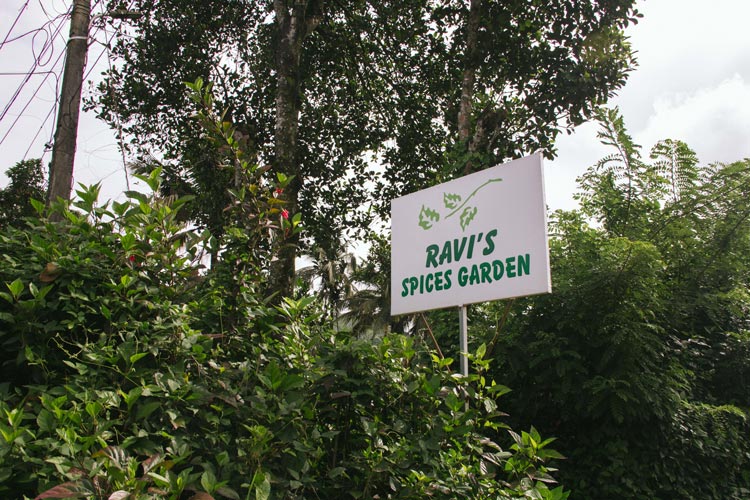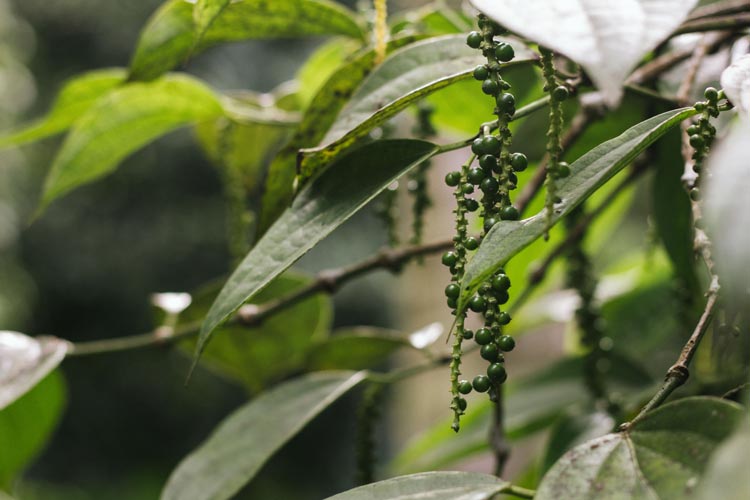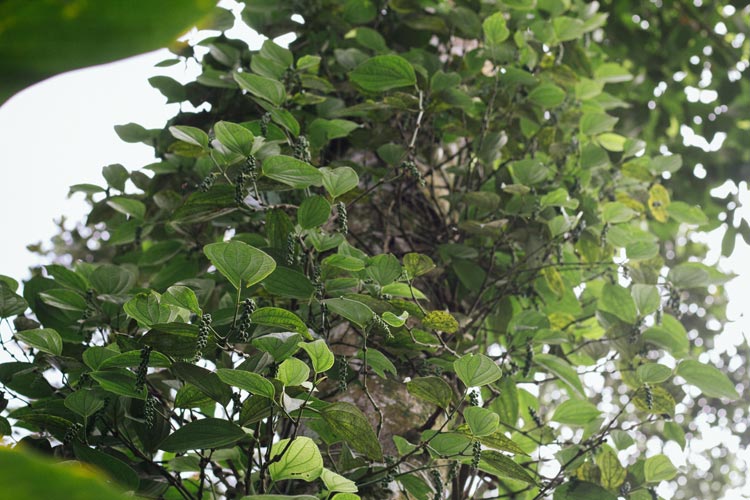
We followed a dirt path too small for our van into Ravi’s Spices Garden. The temperature was cool and the mosquitoes nearly absent. It was a welcome break from the long car ride through Kerala, an Indian state well-known for its spice cultivation.
Ravi’s Spices Garden
I was here on a women-only tour with A Classic Tours Collection, and our tour leader had arranged for a conversation with a spice specialist. Spices are a big part of Indian culture; we had picked up on this simply through our culinary experiences.
What we didn’t know, however, was how spices shaped the world’s development and politics. We didn’t even know the half of it yet, our tour leader assured us.

Spices Played a Role in American history
Before that day, I had never really considered where my spices came from. Nor had I thought about the process that took place for them to look the way they did in my spice cabinet. If you had told me that spices played a role in my citizenship as an American, I would have been completely puzzled.
Our guide, Siad, led us through the lush farm, pausing from tree to tree. Growing up on his grandma’s spice plantation, he had been surrounded by spices and learned their medicinal properties at a young age. Now, Siad passed the information along to those who visited.
He gestured toward a vine of green kernels dangling from a jackfruit tree. Clustered together, they looked like strings of tiny pearls. “This is pepper. In India, we call it the king of spices.”
Siad explained the importance of black pepper in Indian cooking and medicine. A central ingredient in masalas and often used in Ayurvedic practices, black pepper helps reduce fever, asthma, and gas.

Black Pepper, Known as Black Gold, Sparked the Spice Trade
Long ago, the black pepper vine was indigenous only to South India, and it became highly prized for medicinal, spiritual and culinary uses. It could also be stored for extended periods of time. As the king of spices, black pepper was dubbed “black gold” and propelled the spice trade forward.
Some theorize that the Romans began trading with India in the first century—there are mentions of India and black pepper as early as A.D. 77 in Pliny the Elder’s Natural History. But perhaps the most significant move in the spice trade was explorer Vasco da Gama’s journey to India in 1497.
Da Gama sought to create a trade route for Portugal through the Atlantic to India. His expedition wasn’t without brutality. Da Gama’s ships were equipped with a cannon, and he was said to have terrorized other ships on the sea, ransacking their goods and then burning the ships.
Two years later, when da Gama returned to Portugal, less than half of his original crew remained. Aggressively, da Gama had pulled off the first transatlantic trip from Europe to India and monopolized the spice market.
Portugal’s monopoly didn’t last long though, and it kickstarted a series of events that led to the creation of the Dutch and British East India companies. For hundreds of years, India, Holland, Britain, and Portugal would continue fighting for power in a spice war before the British completely took over.

Black Pepper Vines Thrive in Kerala, India’s Climate
No longer the world’s largest producer of black pepper, Kerala’s climate is still optimal for plant growth. A twin monsoon washes the vine and pollinates the plants, encouraging high-quality fruit to flourish. In fact, legend has it that when da Gama requested to take a vine home with him, the king granted him permission, knowing that without the Kerala climate, the vine would be useless in Portugal.
The tenacious vines wind their way up to the sky in search for sunlight, climbing whichever tree or stick that gets them closer. The best of the fruits are typically at great heights, and thus, black pepper is only harvested by men in Kerala.
Women, dressed in saris, would have a difficult time climbing up trees to pluck the plants, Siad explained.

Buying Spices in India
After the tour, he asked if we wanted to buy any spices. We couldn’t resist. Stepping into the spice shop, I inhaled. It smelled like a blend of history and culture.
I thought back on the stories Siad had told us. Each spice he showed us had its own medicinal benefits. Apparently, nutmeg works as a natural Viagra, and turmeric can help bleach peach fuzz. That was all fascinating, but I couldn’t stop thinking about the king.
Clutching the little packets of spice close to my chest, I let my mind wander to the ancient ships of Vasco da Gama, the Portuguese domination of the spice trade and the lost ships at sea. Even Christopher Columbus, in his attempt to find a route to India and her spices, accidentally discovered America in the 15th century, setting off a whole series of events that led to the creation of the United States.
Spices, what we take for granted in our kitchens and grocery stores, were an invisible cornerstone of history. Chasing after a spice indigenous only to this region, the trajectory of an entire world was changed forever. It deserved its name, king of spices.
Iona Brannon is a travel writer based in Los Angeles. Follow her journeys on ionabrannon.com or @ionawanders.
- Life of a Champion: Exploring the Muhammad Ali Center in Louisville - April 19, 2024
- What It’s Like to Live as an Expat: Lake Chapala, Mexico - April 18, 2024
- Top 5 Spots for Stargazing in North Carolina - April 17, 2024
